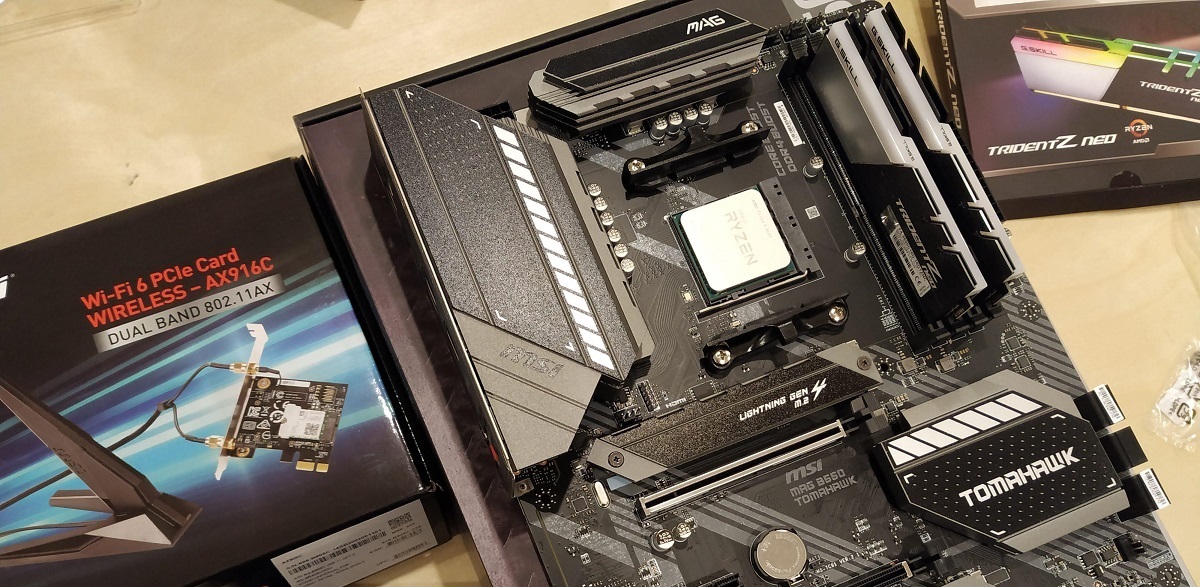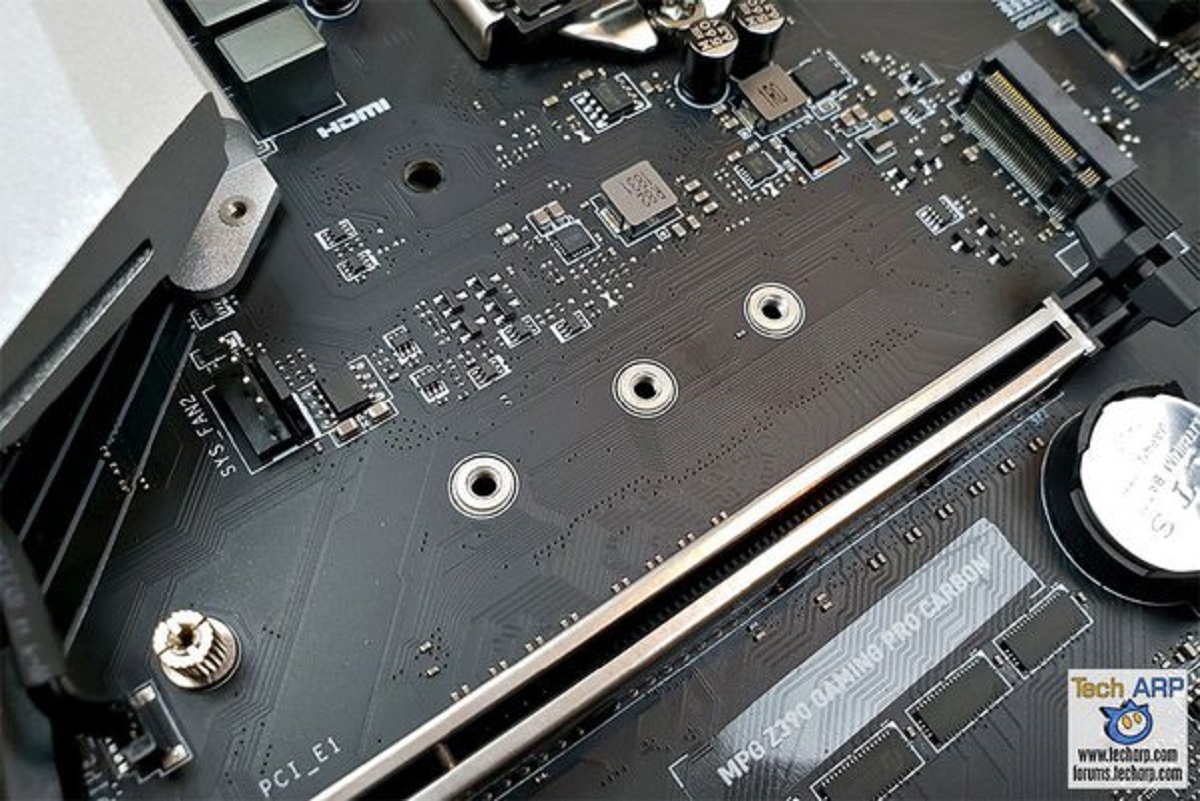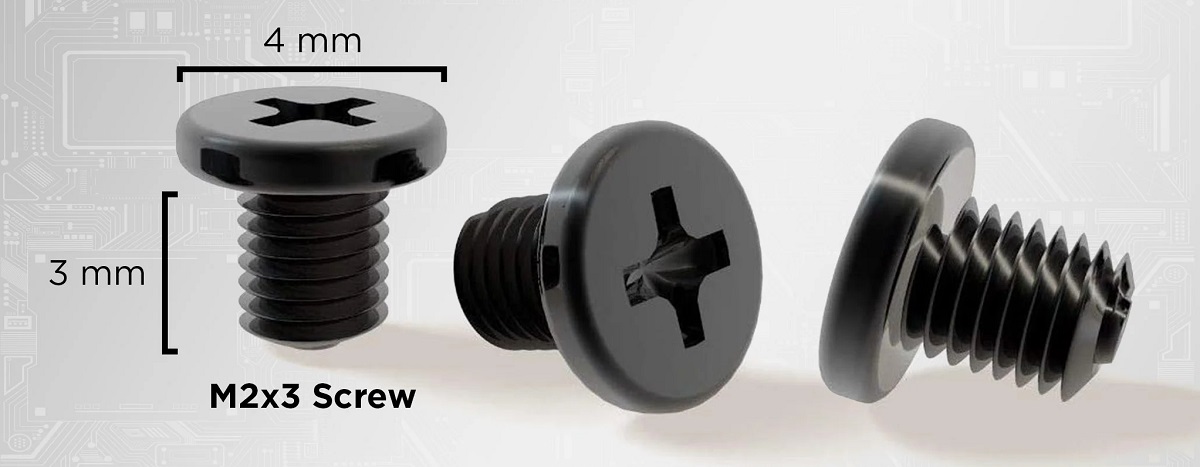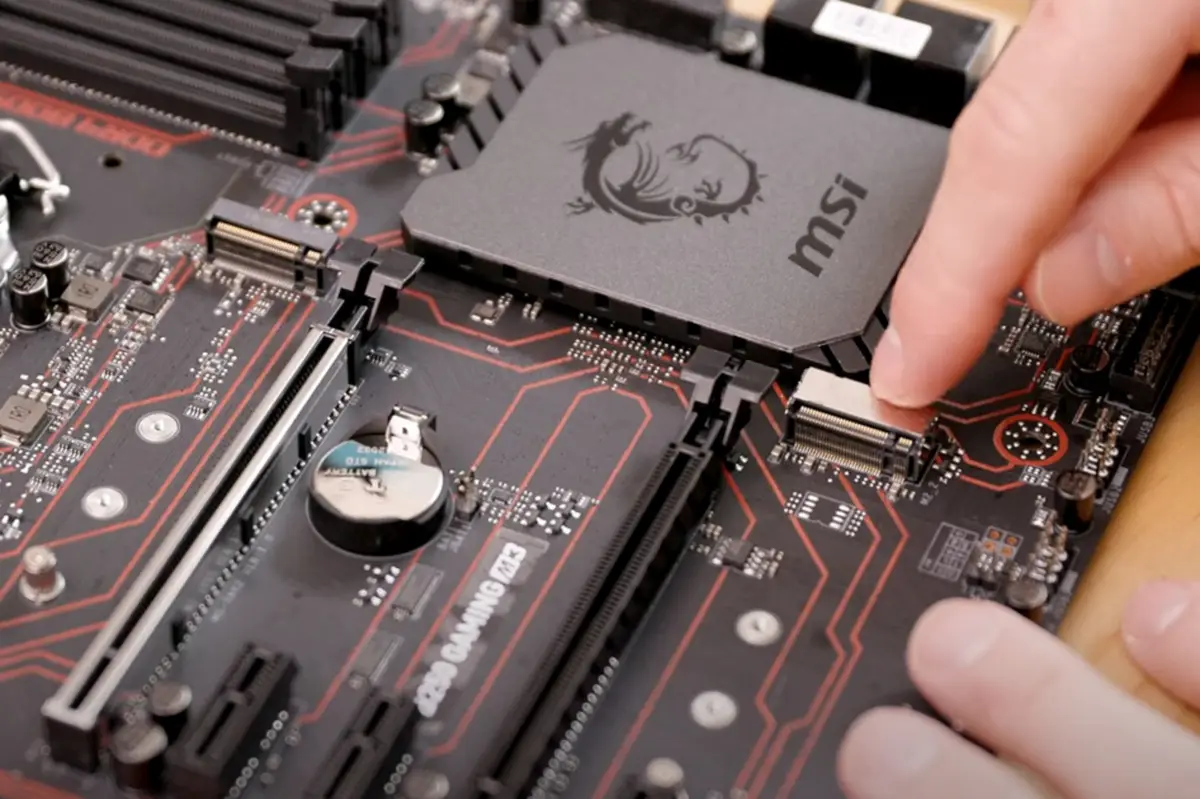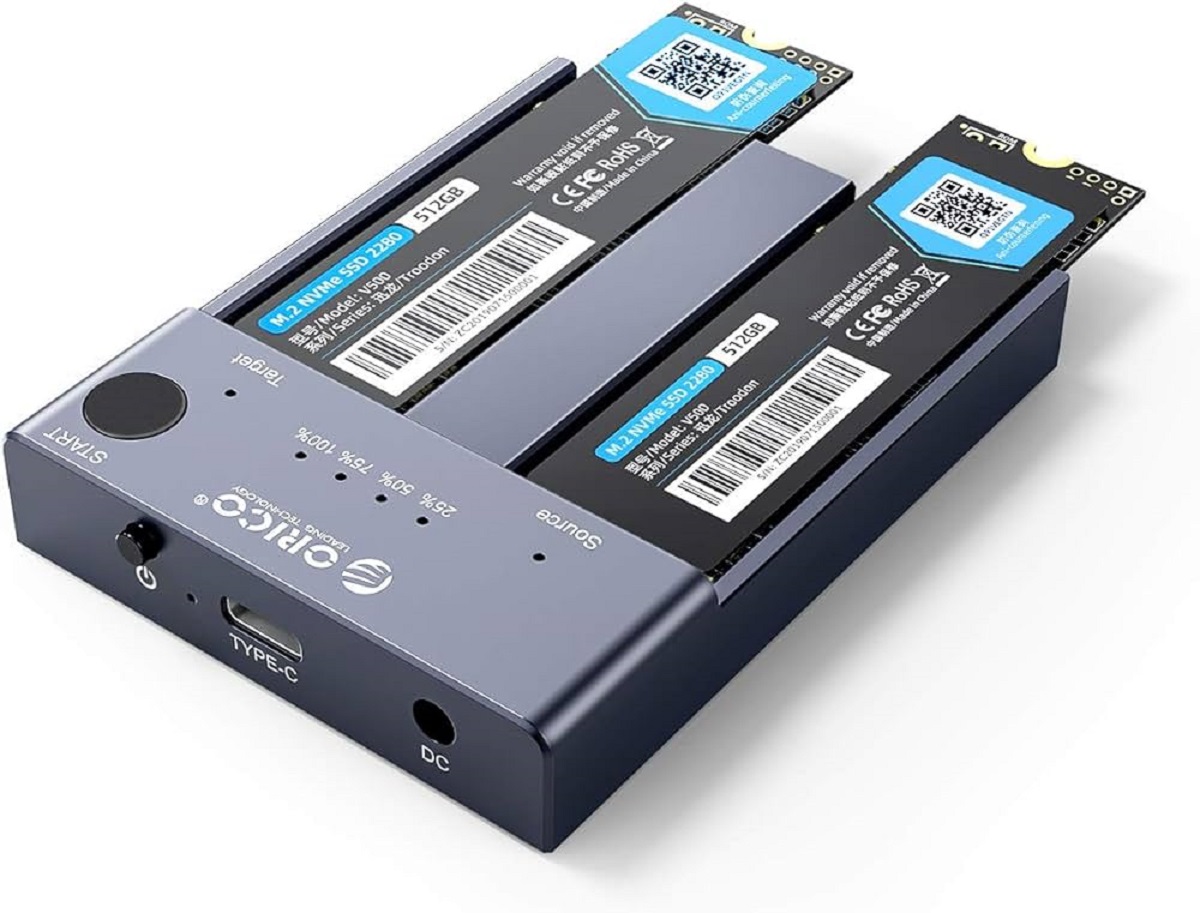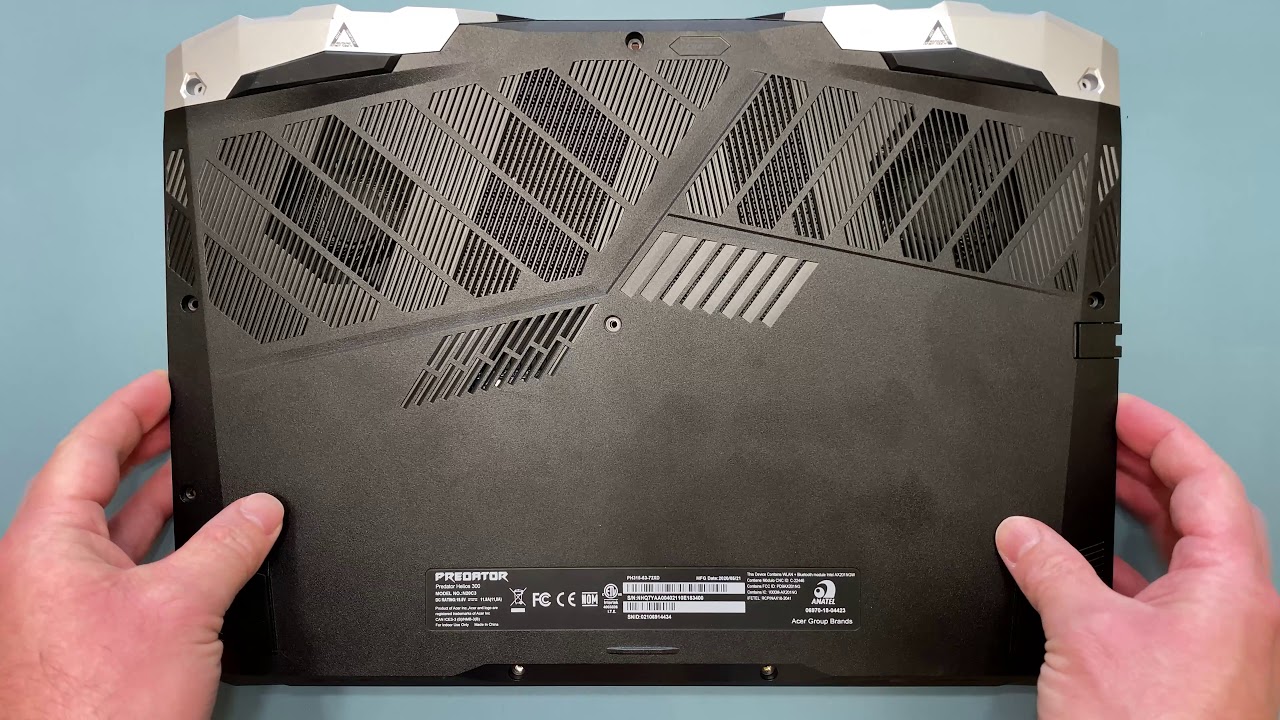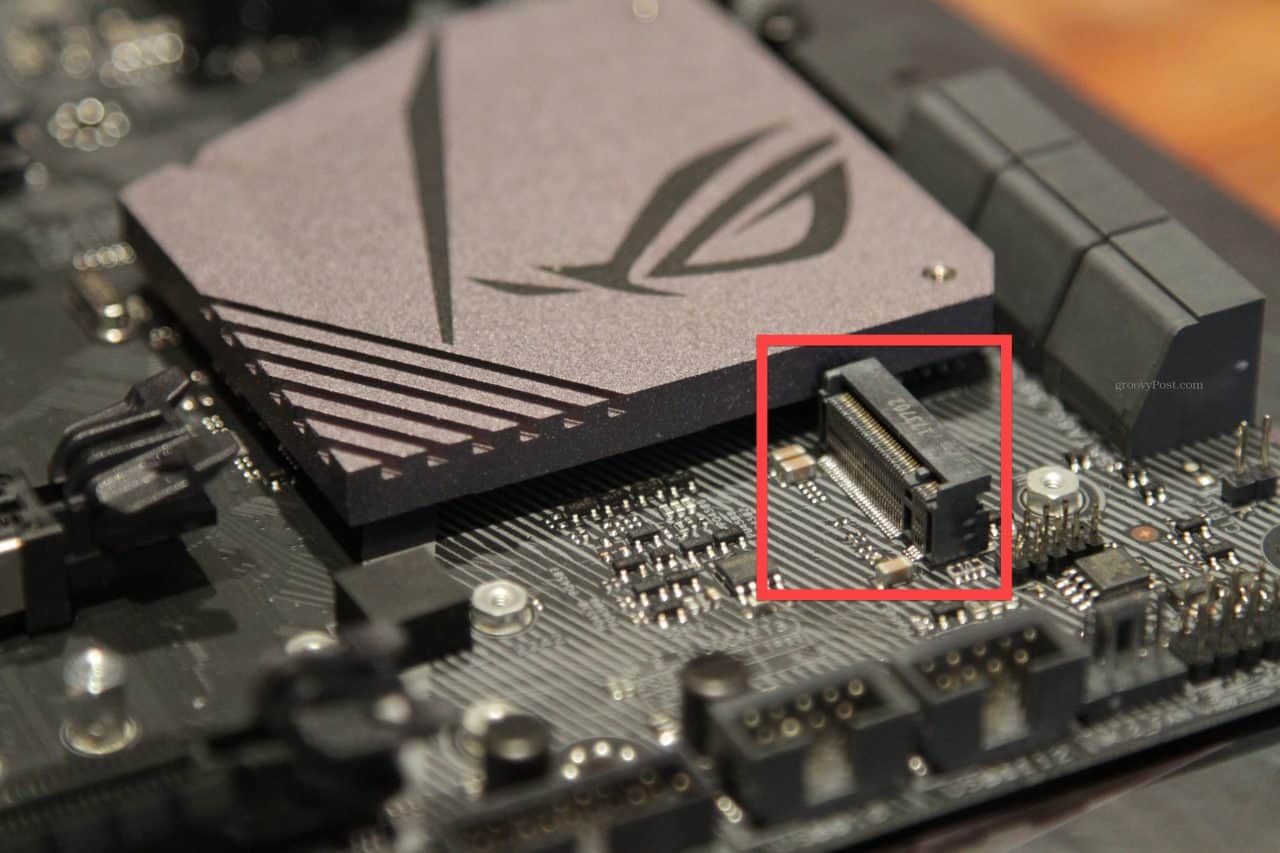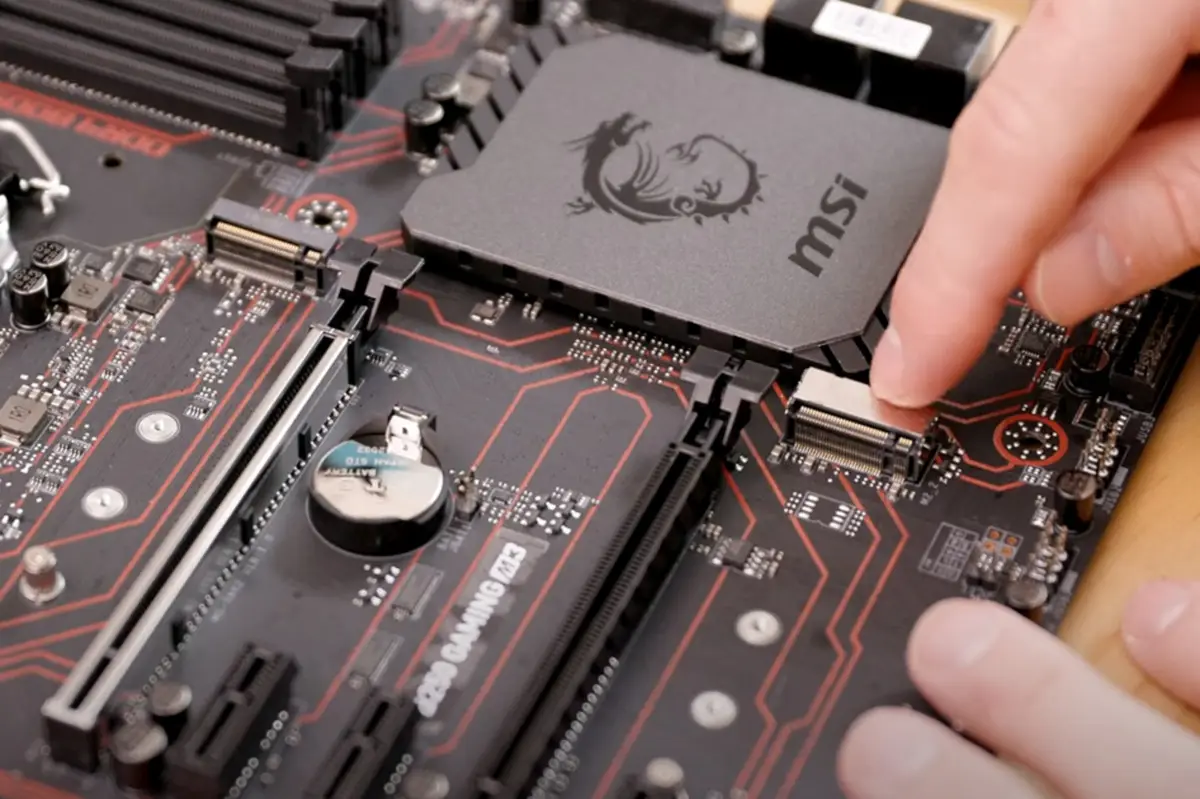Introduction
Welcome to our comprehensive guide on how to determine the number of SSD slots you have in your computer. As solid-state drives (SSDs) continue to gain popularity for their faster performance and reliability over traditional hard drives, it is important to know how many available slots you have for upgrading or expanding your storage capacity.
An SSD slot refers to the physical space or connector on your computer’s motherboard where you can insert a solid-state drive. The number of available slots varies depending on the model and type of computer you have. It is crucial to determine the exact number of slots before attempting to install or upgrade your SSD, as it can greatly impact your system’s performance and storage capabilities.
Knowing the number of SSD slots you have is especially important if you are planning to add more storage space or replace your existing hard drive with an SSD. By determining the available slots upfront, you can ensure compatibility and make informed decisions on the type and size of the SSD to purchase.
In this guide, we will walk you through three different methods to help you determine the number of SSD slots in your computer. Whether you are a tech-savvy enthusiast or a beginner, we have you covered with step-by-step instructions and tips to make the process easier.
So, let’s dive right in and find out how many SSD slots your computer has!
What is an SSD Slot?
Before we delve into how to determine the number of SSD slots you have, let’s first understand what exactly an SSD slot is. An SSD slot, also known as an SSD bay or SSD connector, is a specific location on your computer’s motherboard designed to accommodate solid-state drives.
An SSD slot serves as a physical interface that allows you to connect and install an SSD, which is a type of storage device that uses flash memory instead of traditional spinning disks found in hard drives. By utilizing SSDs, you can experience significantly faster data transfer speeds, improved system responsiveness, and enhanced overall performance.
SSD slots come in different form factors, such as M.2, SATA, or PCIe. M.2 slots are becoming increasingly common and offer a compact and versatile option for SSD installation. SATA slots, on the other hand, are more traditional and are compatible with both SSDs and hard drives. PCIe slots provide even faster data transfer speeds and are commonly found in high-performance gaming or workstation computers.
It is important to note that the number of SSD slots can vary depending on the model and type of computer you have. Some laptops or compact systems may only have a single SSD slot, while desktop computers or high-end workstations may offer multiple slots for expanding storage capacity.
By utilizing an SSD slot, you can upgrade your computer’s storage by adding an additional SSD drive or replacing your existing hard drive with an SSD. This allows you to enjoy faster boot times, quicker application launches, and improved file transfer speeds. SSD slots are an essential feature to consider when planning to upgrade or optimize your computer’s performance.
Now that we have a clear understanding of what an SSD slot is, let’s explore why it is important to know how many SSD slots your computer has.
Why Do I Need to Know How Many SSD Slots I Have?
Knowing how many SSD slots you have in your computer is crucial for several reasons. Let’s explore why it is important to determine the number of available SSD slots:
1. Storage Expansion: If you find that your current storage capacity is running low or you need additional space for your files, knowing the number of SSD slots allows you to plan for storage expansion. By adding an extra SSD, you can increase your system’s storage capacity and potentially avoid the need for external storage solutions.
2. SSD Upgrades: Upgrading your storage from a traditional hard drive to a faster, more efficient SSD has numerous benefits. SSDs significantly improve boot times, application load times, and overall system performance. By determining the number of available SSD slots, you can plan to upgrade your existing storage system and enjoy these performance benefits.
3. Compatibility: Different SSD form factors, such as M.2, SATA, or PCIe, require specific slots for installation. Knowing the number of available slots ensures compatibility with the type of SSD you want to install. This helps avoid any compatibility issues and ensures a seamless installation process.
4. System Performance: The number of SSD slots can impact the overall performance of your system. Adding multiple SSDs in a RAID configuration can significantly improve performance, allowing for faster data access and read/write speeds. By understanding the number of available slots, you can plan for a multi-SSD configuration and optimize your system’s performance.
5. Future Proofing: Knowing the number of SSD slots in your computer can also help future-proof your system. As technology advances and SSDs become more prevalent, having additional slots allows for potential upgrades or improvements without the need to replace your entire system.
By determining the number of SSD slots in your computer, you can make informed decisions about storage expansion, upgrades, and system optimization. This knowledge ensures compatibility, improves performance, and allows for future scalability.
Now that we understand the importance of knowing how many SSD slots you have, let’s explore the different methods you can use to check the number of SSD slots in your computer.
Ways to Check How Many SSD Slots You Have
Now that you understand the significance of knowing the number of SSD slots in your computer, let’s explore three different methods you can use to check how many available slots you have:
Method 1: Check the User Manual or Manufacturer’s Website: The user manual or the manufacturer’s website is a reliable source of information when it comes to determining the number of SSD slots your computer has. The user manual usually provides detailed specifications and diagrams of the motherboard, which will indicate the number of available SSD slots. Alternatively, you can visit the manufacturer’s website and look for the specifications of your specific model to find the information you need.
Method 2: Open up Your Computer: If you are comfortable working inside your computer, you can physically open it up to check the number of SSD slots. Make sure to power off your computer, unplug all cables, and follow proper static electricity precautions. Once you have opened the computer case, visually inspect the motherboard for any vacant slots labeled for SSDs. You may also consult the user manual or search online for motherboard diagrams specific to your computer model to help locate the SSD slots.
Method 3: Use System Information Software: Another method to determine the number of SSD slots is by using system information software. There are various software tools available, both free and paid, that provide detailed information about your computer’s hardware. These tools can display the number of SSD slots and other specifications of your system. Popular software options include CPU-Z, Speccy, and HWiNFO.
By using one or more of these methods, you should be able to determine the number of SSD slots in your computer. Remember to use caution when opening up your computer and follow proper safety guidelines to avoid any damage or electrical hazards.
Once you have determined the number of SSD slots, you can proceed with upgrading or expanding your storage capacity accordingly. Here are some additional tips to keep in mind when adding more SSD slots:
Method 1: Check the User Manual or Manufacturer’s Website
If you want to quickly determine the number of SSD slots in your computer without physically opening it up, checking the user manual or the manufacturer’s website is your best option. Here’s how you can use this method:
1. Locate the User Manual: If you still have the user manual that came with your computer, search for it. The user manual typically contains detailed information about your computer’s specifications, including the number of SSD slots available. Look for a section that discusses the motherboard or storage options.
2. Check the Specifications: Once you have located the relevant section in the user manual, carefully read through it. Look for specific details about the number of SSD slots. It may also provide information about the supported form factors and types of SSDs that can be installed. Take note of this information for future reference.
3. Visit the Manufacturer’s Website: If you no longer have the user manual or if it doesn’t provide the necessary information, visit the manufacturer’s website. Look for the support or product page specific to your computer model. Most manufacturers provide detailed specifications and documentation on their websites, including the number of SSD slots available in different models and configurations.
4. Find the Product Specifications: Navigate to the product page of your computer model on the manufacturer’s website. Look for a section that provides detailed specifications or technical information. In this section, you should be able to find the number of available SSD slots listed explicitly or shown in a diagram or technical drawing. Take note of this information for future reference.
5. Contact Customer Support: If you are still unable to find the information you need, consider reaching out to customer support. Most manufacturers have support channels available, such as live chat, email, or phone. Explain your query and provide them with your computer model details. They should be able to assist you and provide the accurate information regarding the number of SSD slots in your computer.
By consulting the user manual or the manufacturer’s website, you can quickly and easily determine the number of SSD slots without the need to physically open up your computer. This method is especially useful for those who prefer a non-invasive approach or for laptops and other compact systems where accessing the motherboard may not be easy.
Now that you know how to check the number of SSD slots using the user manual or manufacturer’s website, let’s move on to the next method, which involves physically opening up your computer.
Method 2: Open up Your Computer
If you’re comfortable working inside your computer and want a hands-on approach to determine the number of SSD slots, you can physically open up your computer and inspect the motherboard. Here’s how you can use this method:
1. Power Off and Disconnect: Before you start, ensure your computer is powered off and disconnected from any power source. This step is crucial for your safety and to prevent any damage to the components.
2. Prepare for Static Discharge: Reduce the risk of static electricity damaging your computer by grounding yourself. You can do this by touching a grounded metal object before touching any of the computer’s components.
3. Open the Computer Case: Depending on the type of computer you have, there may be different methods to open the case. Consult the user manual or manufacturer’s website for specific instructions on how to open your particular computer model.
4. Locate the Motherboard: Once you have opened the computer case, locate the motherboard. It is the main circuit board inside your computer. It may be covered by a protective shield or positioned in a specific area, depending on the computer model.
5. Look for SSD Slots: Carefully inspect the motherboard for any vacant slots or connectors that are labeled for SSDs. These slots may be labeled M.2, SATA, or PCIe, depending on the type of SSD they are designed for. Some motherboards may also include indicators or markings to identify the number and location of SSD slots.
6. Consult the User Manual or Internet: If you are unable to identify the SSD slots visually, consult the user manual or search online for motherboard diagrams specific to your computer model. These resources can provide detailed information and visual aids to help you locate the SSD slots.
7. Count the Slots: Once you have identified the SSD slots, count the number of available slots. Take note of this information for future reference. It is also recommended to verify the information using additional sources, such as the user manual or manufacturer’s website.
8. Close the Computer Case: After you have determined the number of SSD slots, carefully close the computer case, ensuring that all the necessary connections are reestablished and the case is secured properly.
Remember, opening up your computer may void the warranty, so if your computer is still under warranty, consider contacting the manufacturer or seeking professional assistance to avoid any potential issues.
With this method, you can physically inspect the motherboard to determine the number of SSD slots available in your computer. This hands-on approach is especially helpful for desktop computers or systems with easily accessible components.
Now that you know how to check the number of SSD slots by opening up your computer, let’s move on to the next method, which involves using system information software.
Method 3: Use System Information Software
If you prefer a software-based approach to determine the number of SSD slots in your computer, using system information software can be an effective method. Here’s how you can use this method:
1. Research System Information Software: Start by researching and selecting a reliable system information software. There are various options available, both free and paid, that provide detailed hardware information about your computer.
2. Download and Install the Software: Once you have identified a suitable system information software, download and install it on your computer. Make sure to download the appropriate version compatible with your operating system.
3. Launch the Software: Open the system information software you installed. It will scan your computer’s hardware and generate a detailed report with information about various components, including the SSD slots.
4. Locate the SSD Slot Information: Look for the specific section or tab in the software that provides information about the storage devices or motherboard. The software should display the number of SSD slots available, along with other relevant details such as the type of slots and their compatibility.
5. Verify the Information: After finding the SSD slot information, verify it by cross-referencing with other reliable sources such as the user manual or manufacturer’s website. This helps ensure accuracy and confirms the number of available SSD slots in your computer.
6. Take Note of the Information: Once you have confirmed the number of SSD slots, make a note of this information for future reference. This will be helpful when considering upgrades, expansions, or compatibility with different types of SSDs.
7. Explore Additional Features: System information software often offers additional features and functionality. Take the time to explore these features, as they may provide useful insights into your computer’s performance, temperatures, and other hardware-related information.
8. Keep the Software Updated: To ensure accurate and reliable information, regularly update the system information software to the latest version. This helps in capturing any changes or updates related to your computer’s hardware configuration.
Using system information software provides a convenient and non-invasive method to determine the number of SSD slots in your computer. It eliminates the need to open up the computer or consult external resources, making it suitable for users who prefer a software-based approach.
Now that you know how to check the number of SSD slots using system information software, let’s move on to some helpful tips for adding more SSD slots to your computer.
Tips for Adding More SSD Slots
If you’ve determined that your computer has available slots for additional SSDs and you’re considering adding more, here are some tips to keep in mind:
1. Consider Your Computer’s Compatibility: Before purchasing additional SSDs, ensure they are compatible with your computer’s existing slots. Check the specifications of the SSD slots, including the form factor (M.2, SATA, PCIe) and supported sizes.
2. Plan for Sufficient Power and Cooling: When adding more SSDs, consider your computer’s power supply and cooling capabilities. SSDs require power, and additional SSDs may put extra strain on your power supply. Additionally, ensure your computer has adequate cooling to prevent overheating, especially if you plan to use your system intensively.
3. Research RAID Configurations: If you’re adding multiple SSDs, consider setting up a RAID configuration for improved performance or redundancy. Research different RAID levels and their benefits to determine the most suitable setup for your needs.
4. Check Drive Compatibility: If you’re adding SSDs of different capacities or models, check if they have compatibility requirements. Some RAID configurations or software may require matching drives to work optimally.
5. Use Cable Management: When installing additional SSDs, ensure proper cable management to maintain a tidy and organized interior. Proper cable management not only improves airflow but also makes future upgrades or maintenance easier.
6. Backup Your Data: If you’re replacing your existing storage system or adding more SSDs to expand storage, it’s always a good practice to backup your important data beforehand. This ensures that your files are safe in case of any mishaps during the installation process.
7. Follow Proper Installation Procedures: When installing additional SSDs, follow the proper installation procedures outlined in the user manual or provided by the manufacturer. This ensures a correct and secure connection, preventing potential data loss or damage to the SSD or other components.
8. Consider Professional Assistance: If you’re unsure about the installation process or if you’re not comfortable working inside your computer, consider seeking professional assistance. They can ensure that the SSDs are installed correctly and help optimize your system’s performance.
By following these tips, you can successfully add more SSD slots to your computer and optimize your storage capacity and performance. Always refer to the user manual or seek expert guidance when in doubt to ensure a smooth and successful installation process.
Conclusion
Knowing the number of SSD slots in your computer is essential for planning storage upgrades, optimizing performance, and making informed decisions about your computer’s storage capabilities. By determining the available slots, you can add more SSDs, upgrade your existing storage, or configure RAID setups for improved performance or data redundancy.
In this guide, we explored three methods to help you check the number of SSD slots in your computer: checking the user manual or manufacturer’s website, opening up your computer to physically inspect the motherboard, and using system information software. Each method offers its own advantages, allowing you to choose the approach that suits your comfort level and preferences.
Remember to consult reliable sources such as the user manual, the manufacturer’s website, or reputable system information software to verify the number of SSD slots. Additionally, follow proper installation procedures, consider compatibility, and plan for sufficient power and cooling when adding more SSDs to your computer.
With the knowledge of how many SSD slots you have, you can maximize your computer’s storage capacity, experience faster performance, and effectively manage your files and applications.
We hope this guide has provided you with the information and steps needed to determine the number of SSD slots in your computer. Whether you’re a beginner or an experienced user, knowing the available slots will empower you to make informed decisions and take advantage of the benefits that SSDs offer.
Now it’s time to take the necessary steps to expand your storage or upgrade your existing system, and enjoy the enhanced performance and responsiveness that SSDs bring.









